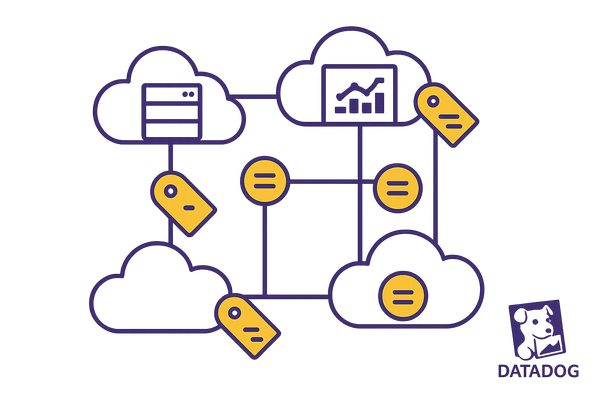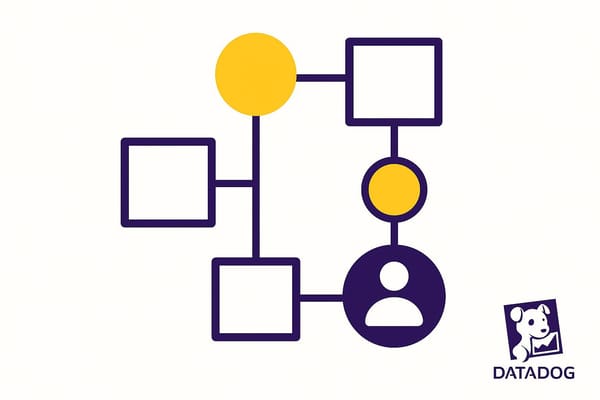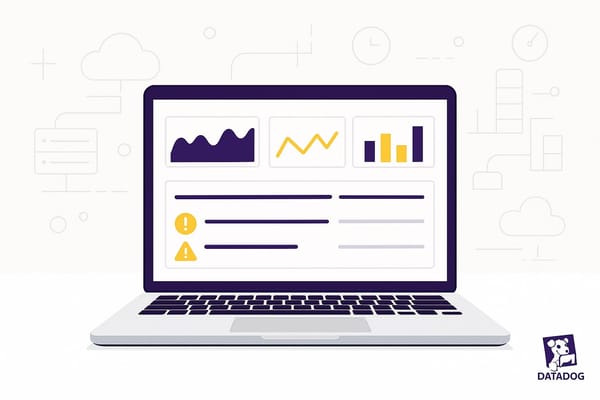7 Tips To Reduce Datadog Costs
Learn practical strategies to cut Datadog costs while maintaining effective monitoring, from reducing metrics to optimizing logs.
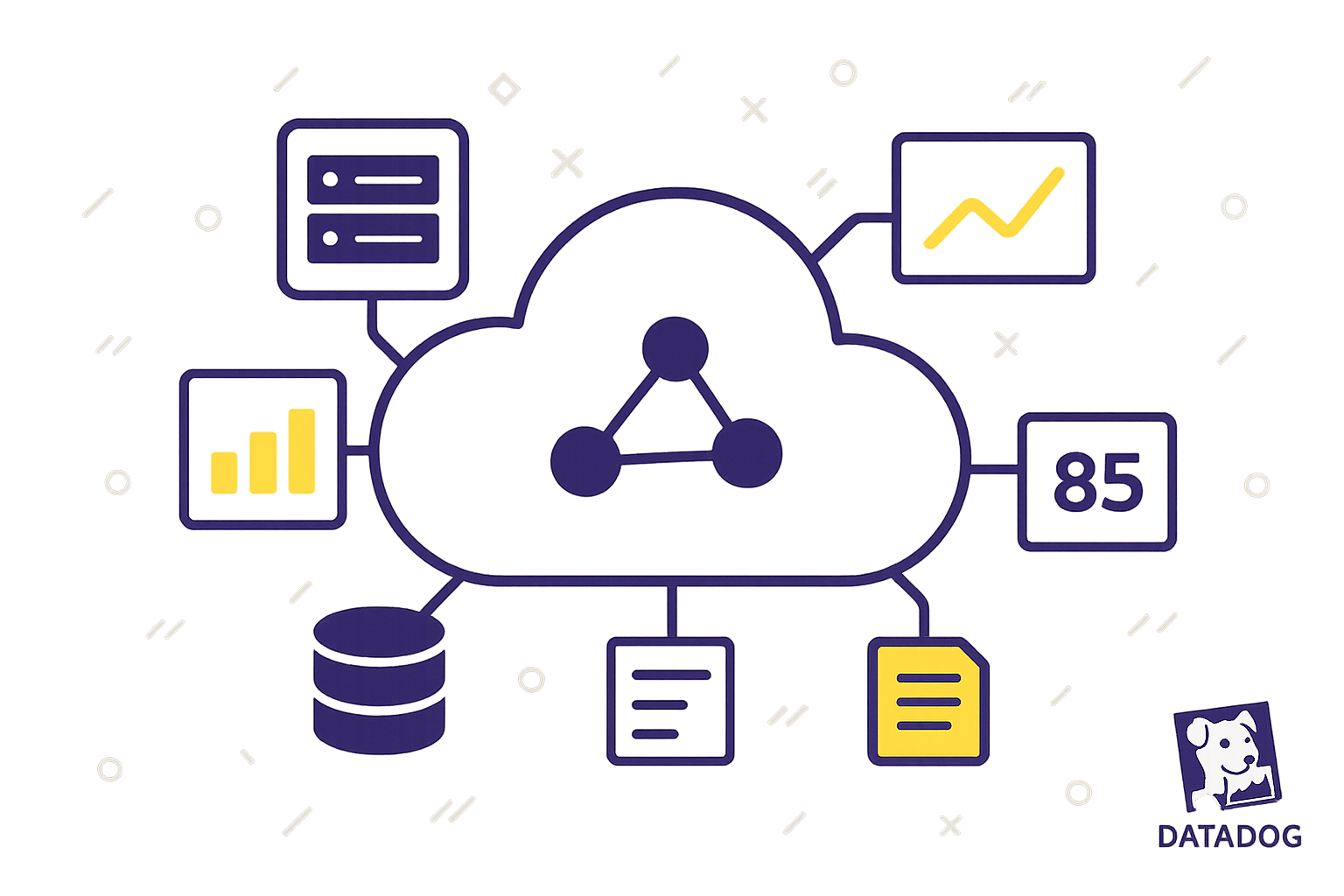
Datadog costs can quickly add up, but you don’t have to overspend to maintain effective monitoring. Here’s how you can cut costs without sacrificing performance:
- Reduce Metric Volume: Eliminate unnecessary metrics and optimize custom metric usage.
- Cut Log Costs: Filter out low-value logs and set shorter retention periods for less critical data.
- Use Built-in Cost Tools: Monitor usage patterns and set alerts for unusual spending.
- Lower Infrastructure Costs: Adjust data collection frequency and tailor monitoring by environment.
- Use Tags for Cost Tracking: Implement a tagging system to allocate costs across teams and services.
- Improve Dashboard Efficiency: Consolidate dashboards and refine alert rules to reduce data usage.
- Get Volume Pricing: Negotiate bulk discounts or consolidate accounts for better rates.
How to Reduce Your Datadog Costs by Optimizing Metric ...
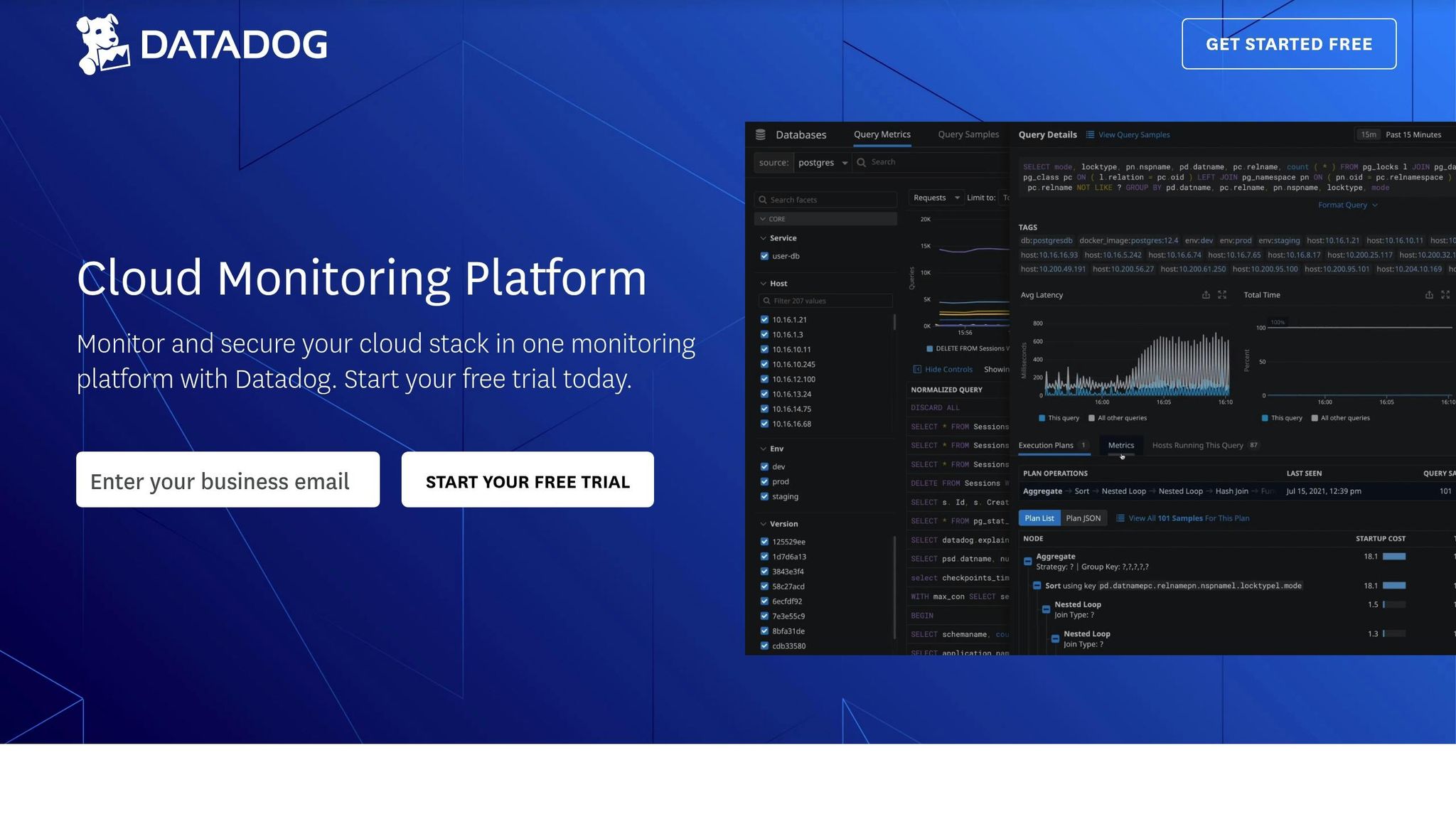
Tip 1: Reduce Metric Volume
Cut down on metric volume to save on Datadog costs while still maintaining effective system monitoring.
Remove Unnecessary Metrics
Take a closer look at your metrics and keep only the ones that provide actionable insights:
- Check Usage Patterns: Get rid of metrics that aren’t being used in dashboards or alerts.
- Evaluate Business Impact: Drop metrics that don’t directly influence your key performance indicators.
Here’s an easy way to prioritize your metrics:
| Metric Category | Retention Priority | Example Metrics |
|---|---|---|
| Critical | Keep | Error rates, response times, conversion rates |
| Important | Review periodically | Cache hit rates, queue lengths |
| Optional | Remove if unused | Debug-level metrics, detailed system stats |
Once you’ve trimmed unnecessary metrics, shift your focus to managing custom metrics to further reduce costs.
Control Custom Metric Usage
Custom metrics can be pricey. Use these techniques to manage them effectively:
- Tag Filtering: Use tags to group data by components. For example, track one metric per server group instead of creating separate metrics for each server.
- Aggregate Data: Combine related metrics into averages or percentiles over short time periods.
- Adjust Collection Intervals: Set collection intervals based on priority. Critical metrics can update frequently, while less important ones can update less often.
Tip 2: Cut Log Costs
Efficient log management can help reduce Datadog expenses while keeping essential data intact. One key step is to use filtering to focus on the logs that matter most.
Set Log Filters
Use pre-collection filters to exclude logs with little or no actionable value. Here's how you can prioritize and handle logs:
| Log Priority | Collection Strategy | Example Log Types |
|---|---|---|
| High | Fully collect | Error logs, security events, payment transactions |
| Medium | Collect with sampling | Application state changes, user authentications |
| Low | Minimal collection or sampling | Debug messages, routine health checks |
To make the most of filtering:
- Set up filters tailored to specific environments.
- Exclude logs that generate high volume but provide little value, like routine health checks.
- Eliminate duplicate log entries to avoid unnecessary data storage.
Set Log Storage Periods
Organize logs into retention tiers based on their importance:
- Critical Logs: Keep these (e.g., security or compliance logs) for extended periods to meet audit requirements.
- Operational Logs: Retain these for a shorter time to aid in troubleshooting.
- Debug Logs: Store these for the shortest time since they are typically only needed temporarily.
Datadog's archival feature can help you move older logs into cold storage for long-term but less expensive retention.
Tip 3: Use Built-in Cost Tools
Datadog offers cost monitoring features that can help you keep track of spending and avoid surprise charges. By using these tools effectively, you can better manage your monitoring budget.
Track Usage Patterns
The Usage Metrics page in Datadog gives you real-time insights into how services are being used. Pay attention to these key metrics to manage costs effectively:
| Metric Type | Billing Method | Monitoring Focus |
|---|---|---|
| Host Count | 99th percentile | Observe daily fluctuations |
| Custom Metrics | Billed hourly (99th percentile) | Track creation rate |
| Log Volume | GB/day | Monitor retention levels |
| APM Spans | Per minute | Ensure service coverage |
The Usage Attribution report can also help you identify which teams or services are driving costs. For instance, Spotify's engineering team found that 23% of their monitoring expenses came from unused custom metrics. By addressing this, they saved $42,000 annually.
Create Usage Alerts
Cost Monitors allow you to detect unusual spending patterns early, helping you stay within your budget:
-
Set Progressive Thresholds
Establish a tiered alert system to warn you before costs spiral out of control. For example, set a warning threshold at 90% of your budget and a critical threshold at 110%, using a 7-day average for daily monitoring. -
Configure Team-Specific Alerts
Use tags to track costs by team. For example, Cloudflare's developer tools team noticed a 37% week-over-week increase in spending through team-tagged cost monitors. This led them to identify and fix an overprovisioned Kubernetes cluster, saving $18,000 per month.
Datadog's Watchdog AI also helps by analyzing historical data to spot spending anomalies. This ensures alerts catch unexpected shifts quickly. Many organizations using these tools identify unusual spending within 24 hours, reducing overspending by an average of 22% over three months.
Once you've clarified your usage patterns and set up alerts, you're ready to focus on cutting infrastructure costs in the next tip.
Tip 4: Lower Infrastructure Costs
After initial cost reductions, focus on fine-tuning your infrastructure monitoring to trim Datadog expenses further. Since infrastructure monitoring plays a big role in your Datadog bill, adjusting how often data is collected and customizing monitoring for different environments can help you save money while keeping the visibility you need.
Adjust Collection Frequency
Set collection intervals based on the importance of the service. Critical services need frequent updates, while less critical components can handle longer intervals. Here's a breakdown:
| Component Type | Collection Frequency | Impact on Cost |
|---|---|---|
| Critical Services | Short intervals (e.g., updates every few seconds) | Ensures continuous monitoring of key systems |
| Background Jobs | Moderate intervals (e.g., updates every minute) | Balances timely insights with cost control |
| Static Resources | Longer intervals (e.g., updates every several minutes) | Cuts data volume and reduces costs |
This approach helps you reduce data ingestion without sacrificing essential monitoring.
Tailor Monitoring by Environment
Not all environments need the same level of monitoring. For example, production systems require detailed monitoring, while staging and development can get by with less. Here's how to adjust monitoring by environment:
| Environment | Monitoring Level | Recommended Approach |
|---|---|---|
| Production | Comprehensive | Full metrics with frequent updates for deep insights |
| Staging | Moderate | Focus on key metrics with a moderate update pace |
| Development | Basic | Track only critical metrics to minimize overhead |
In staging and development environments, reduce monitoring depth by limiting custom metrics and using selective settings. Focus on key metrics like system health (CPU, memory, disk usage), application performance (response times, error rates), and business-critical KPIs (transaction volumes, user activity). This targeted approach keeps costs under control while maintaining the insights you need.
Tip 5: Use Tags for Cost Tracking
Tags are a powerful way to monitor your Datadog spending and allocate costs across teams, projects, and services. A well-thought-out tagging system ensures you can track resources effectively and manage expenses with precision.
Create Tag Standards
To get started, set up a consistent tagging system to monitor resource usage and control costs. Here's a guide to building your tagging framework:
| Tag Category | Purpose | Example Tags |
|---|---|---|
| Business Unit | Track department costs | team:engineering, team:marketing |
| Environment | Monitor spending by environment | env:prod, env:staging, env:dev |
| Application | Track app-specific metrics | app:payment, app:inventory |
| Cost Center | Manage budget allocation | cost:operations, cost:infrastructure |
Start with key metrics like CPU, memory, and network usage, then expand to application-specific data. These tags provide clarity and help you maintain transparency in your monitoring expenses.
Split Costs Using Tags
Tags can also help you break down costs across teams, projects, and services. This approach promotes accountability and encourages teams to manage their monitoring budgets more effectively.
| Cost Allocation Method | Implementation Approach | Benefits |
|---|---|---|
| Team-Based | Assign costs using department tags | Clear accountability for each team |
| Project-Based | Track expenses by project identifiers | Improved project budget oversight |
| Service-Based | Monitor costs per microservice | Detailed visibility into service-level expenses |
For deeper insights, combine multiple tag dimensions. For instance, you could use team:payments,env:prod,service:api to track the production API costs specifically for the payments team. This level of detail can reveal areas where you can save money without sacrificing essential monitoring.
Tip 6: Improve Dashboard Efficiency
Managing dashboards effectively can help you save on Datadog costs. By simplifying dashboards and fine-tuning alerts, you can maintain robust monitoring without overspending.
Combine Similar Dashboards
Consolidating dashboards is a smart way to cut down on redundant API calls and simplify your monitoring setup.
| Dashboard Type | How to Consolidate | Why It Helps |
|---|---|---|
| Environment-specific | Use template variables to toggle between environments | Cuts down on duplicate API requests |
| Service monitoring | Create unified dashboards with filters for key services | Combines multiple views into one |
| Team dashboards | Build role-based views with shared metrics | Makes access and maintenance easier |
- Audit your dashboards: Check which dashboards overlap in purpose or data and identify opportunities to combine them.
- Leverage template variables: Replace static dashboards with ones that dynamically adjust based on environment, service, or team.
- Master dashboards with drill-downs: Use a single high-level dashboard that links to detailed views as needed, instead of maintaining multiple in-depth dashboards.
Once your dashboards are streamlined, the next step is to optimize alert configurations to further reduce costs.
Set Better Alert Rules
Fine-tuning your alert settings can cut down on false positives and unnecessary API usage, helping you save resources while keeping your monitoring effective. Focus on precise, actionable alerts.
| Alert Component | Optimization Approach | Why It Helps |
|---|---|---|
| Evaluation frequency | Adjust based on the importance of each metric | Aligns monitoring with priorities |
| Threshold settings | Use dynamic thresholds and longer evaluation windows | Reduces false alarms |
| Alert grouping | Combine related alerts into composite monitors | Lowers alert noise and processing load |
- Adjust alert frequency: Set evaluation intervals based on how critical each metric is to your business.
- Group similar alerts: Combine related alerts into a single notification to avoid duplication.
- Use composite monitors: Design multi-condition alerts that track related metrics together, reducing the number of evaluations needed.
These steps not only improve efficiency but also help you manage costs more effectively.
Tip 7: Get Volume Pricing
Once your metrics, logs, and dashboards are organized, it’s time to focus on cutting costs by taking advantage of volume pricing.
Negotiate Bulk Discounts
Reach out to Datadog's sales team to discuss bulk pricing opportunities. Share details about your current usage and anticipated growth to negotiate better rates. While the exact discount thresholds aren’t public, having a clear picture of your usage can give you leverage in these discussions.
Combine Multiple Accounts
If your organization operates multiple Datadog accounts, consolidating them could lead to better pricing. This approach is especially helpful for organizations with separate accounts for different departments.
Start by reviewing all active accounts, then contact Datadog support for advice on merging them. Plan the process carefully to avoid disruptions, and work closely with Datadog support to ensure everything goes smoothly.
Using these methods can help you manage costs more effectively as you optimize your Datadog setup.
Conclusion: Reducing Your Datadog Bill
Cutting Datadog costs doesn’t have to mean compromising on monitoring quality. These tips can help you lower expenses while keeping your monitoring effective. Start small and make gradual adjustments to see steady improvements.
Here’s how to approach cost-saving without losing essential functionality:
- Be cautious when reducing metric volume or log retention. Focus on eliminating unnecessary data while ensuring you keep critical information for compliance and analysis.
- Merging dashboards can improve efficiency, but make sure they stay well-organized and user-friendly.
- Negotiating volume pricing can save money, though it may involve committing to longer contracts.
A phased approach works best. Begin by removing unused metrics and fine-tuning log filters. From there, look at optimizing infrastructure and consolidating accounts.
The most effective strategies combine multiple methods. For example, reducing metric volume while managing tags efficiently can multiply your savings and still provide the visibility you need. These steps help SMBs use Datadog in a cost-effective way that supports growth.
FAQs
How can I identify and remove unnecessary metrics to lower Datadog costs?
To reduce Datadog costs, start by reviewing your current metrics usage. Focus on identifying metrics that are redundant, outdated, or provide little value to your monitoring needs. Prioritize metrics that directly impact your system's performance or business goals, and remove any that don't provide actionable insights.
You can also group related metrics into aggregated views or custom dashboards to reduce the number of individual metrics being tracked. Regularly auditing your metrics and aligning them with your team's objectives can help keep your Datadog usage efficient and cost-effective.
How can I use tags in Datadog to track and manage costs across teams more effectively?
Using tags effectively in Datadog can help you track and allocate costs across teams with greater precision. Here are some best practices:
- Create a consistent tagging strategy: Use clear and standardized tags, such as
team:engineeringorenvironment:production, to ensure everyone follows the same conventions. - Tag by team and environment: Assign tags that identify which team or department is responsible for specific resources, as well as the environment (e.g., development, staging, or production).
- Use tags for cost allocation: Leverage tags in Datadog’s cost analysis tools to break down expenses by team, project, or service.
By implementing a well-thought-out tagging strategy, you can gain better visibility into your Datadog usage and make more informed decisions to optimize costs.
What should I consider when negotiating volume pricing with Datadog to reduce costs?
Negotiating volume pricing with Datadog can be a great way to optimize your costs, especially if your business has growing monitoring needs. To get started, consider the following:
- Usage Patterns: Analyze your current and projected usage of Datadog services, such as metrics, logs, and traces. Having a clear understanding of your needs will help you negotiate better terms.
- Commitment Levels: Be prepared to discuss long-term commitments, as Datadog may offer discounts for annual or multi-year agreements.
- Custom Requirements: Highlight any specific needs, like high log retention or custom dashboards, that could influence pricing discussions.
Reaching out to Datadog’s sales team with detailed usage data and a clear understanding of your requirements can help you secure a pricing plan that aligns with your budget and business goals.


